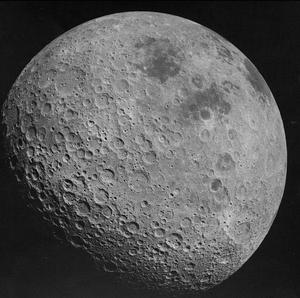Glossary term: Asteroid
Description: An asteroid is a small body that orbits around the Sun or another star or stellar remnant. Asteroids are solid bodies of various compositions: a number of them are rich in carbon, some contain more rocky material (silicates), and others are mainly composed of metals.
Most asteroids are piles of rubble bound together by gravity, with bumpy, uneven shapes. Some asteroids have moons – other small asteroids which orbit them.
Asteroids are smaller than dwarf planets (which have enough mass for gravity to pull them into a nearly round shape). They are larger than meteoroids; the lower size limit of an asteroid is commonly set at between one and 10 meters across. If heating by the Sun or star causes the small body to emit gas and dust, the body is a comet and not an asteroid (although the distinction is not always clear).
Historically, the name asteroid was given to any astronomical body that orbits the Sun that was too small to resolve with a telescope. As they appeared as star-like points through a telescope they were named asteroids after the Greek word for star-like.
Related Terms:
- Asteroid Belt
- Asteroid Family
- Cometary Coma
- Comet
- Cometary Tail
- Near-Earth Objects
- Solar System
- Trojans
- Small Solar System Body
See this term in other languages
Term and definition status: This term and its definition have been approved by a research astronomer and a teacher
The OAE Multilingual Glossary is a project of the IAU Office of Astronomy for Education (OAE) in collaboration with the IAU Office of Astronomy Outreach (OAO). The terms and definitions were chosen, written and reviewed by a collective effort from the OAE, the OAE Centers and Nodes, the OAE National Astronomy Education Coordinators (NAECs) and other volunteers. You can find a full list of credits here. All glossary terms and their definitions are released under a Creative Commons CC BY-4.0 license and should be credited to "IAU OAE".
Related Media
Ida and Dactyl
Credit: NASA/JPL credit link
License: PD Public Domain icons
Related Activities
Creating Asteroids
astroEDU educational activity (links to astroEDU website) Description: Have fun, building asteroids using clay!License: CC-BY-4.0 Creative Commons Attribution 4.0 International (CC BY 4.0) icons
Tags: Hands-on , Model Age Ranges: 4-6 , 6-8 , 8-10 Education Level: Pre-school , Primary Areas of Learning: Modelling , Social Research Costs: Medium Cost Duration: 1 hour 30 mins Group Size: Group Skills: Communicating information , Developing and using modelsImpact Craters
astroEDU educational activity (links to astroEDU website) Description: A literal Earth-Shattering experimentLicense: CC-BY-4.0 Creative Commons Attribution 4.0 International (CC BY 4.0) icons
Tags: History , Impact , Experiment Age Ranges: 10-12 , 12-14 , 14-16 Education Level: Middle School , Primary , Secondary Areas of Learning: Guided-discovery learning , Modelling , Traditional Science Experiment Costs: Low Cost Duration: 1 hour Group Size: Group Skills: Analysing and interpreting data , Asking questions , Constructing explanations , Engaging in argument from evidence , Using mathematics and computational thinkingMeteoroids, Meteors and Meteorites
astroEDU educational activity (links to astroEDU website) Description: Unveiling the mystery of "shooting stars": meteors, meteorites and meteroidsLicense: CC-BY-4.0 Creative Commons Attribution 4.0 International (CC BY 4.0) icons
Tags: Geology Age Ranges: 6-8 , 8-10 , 10-12 , 12-14 Education Level: Middle School , Primary Areas of Learning: Interactive Lecture Costs: Low Cost Duration: 1 hour 30 mins Group Size: Group Skills: Analysing and interpreting data , Asking questions , Communicating information , Engaging in argument from evidence











